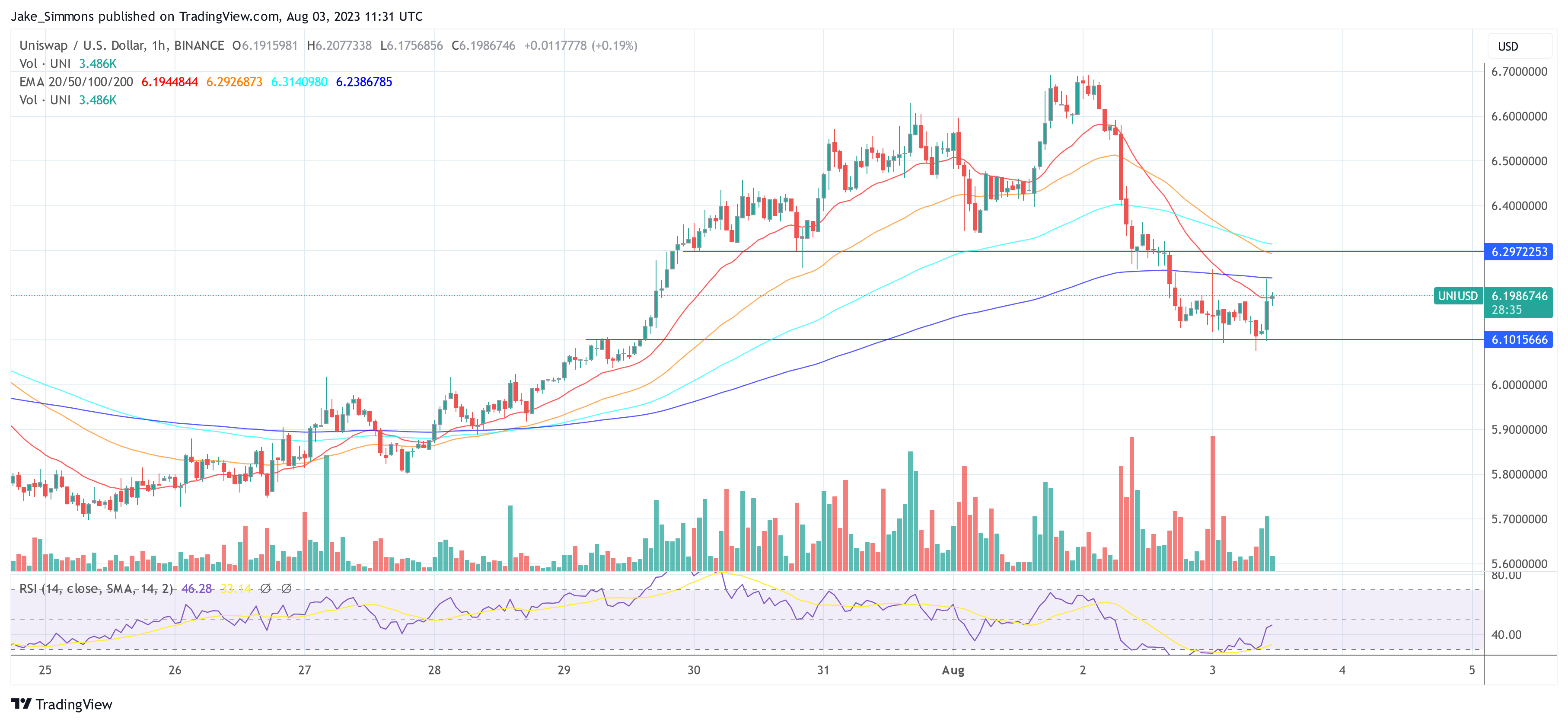In an analysis, Anders Helseth, Vice President at K33 Research, has made a strong case against the viability of the Uniswap (UNI) token. Are analysis revolves around the intriguing dynamics of the decentralized finance (DeFi) market, which fundamentally challenges UNI’s current valuation and future potential.
Helseth begins his argument with a seemingly simple question: “The Uniswap protocol generates significant trading fees, but will the UNI token ever gain its (fair) share?” His conclusion is emphatically negative.
Is the Uniswap (UNI) token worthless?
For context, UNI is a governance token for the Uniswap protocol, a decentralized exchange that earns a 0.3% fee on trades. However, as Helseth points out, the full trading fee currently goes to liquidity providers, with UNI holders only able to benefit if board votes authorize fee dividends to UNI holders.
Even in a sluggish DeFi market, the fully diluted value of the UNI token is 15 times the annual trading fee paid when using the protocol, currently around $6 billion. If the UNI token could capture all of the trading costs, it would arguably be an irresistible buy. Helseth, however, makes a convincing case to the contrary.
“The UNI token is currently capturing 0% of the 0.3% trading fee, which goes entirely to liquidity providers,” says Helseth, highlighting the token’s current lack of intrinsic value.
The core of his argument revolves around three players in the DeFi space: the users, the protocol (and thus UNI token), and the liquidity providers. According to Helseth, the interplay between these actors is detrimental to the UNI token’s monetization potential. Helseth explains:
The entire protocol can be copied exactly within a few minutes almost free of charge. This argument implies that all the power lies with the liquidity providers in the battle for trading fees.
The primary concern for users is liquidity and cost-effectiveness. If the same protocol could be replicated on a whim, users would inevitably gravitate towards the version with the most liquidity – to minimize slippage when executing trades. This dynamic significantly empowers liquidity providers who, unlike UNI holders, own real, valuable tokens.
In addition, switching to another smart contract may incur some costs, but these are relatively low, which strengthens the negotiating position of liquidity providers.
Finally, Helseth states: “Given these relatively low switching costs from a user perspective, we can only conclude that the power lies with the liquidity providers. So while the Uniswap protocol generates significant trading fees, we believe the potential for the UNI token to capture any of this revenue is almost non-existent.
At the time of writing, the UNI price stood at $6.19 after being rejected at the 200-day EMA yesterday.

Featured image of Guarda Wallet, chart from TradingView.com

